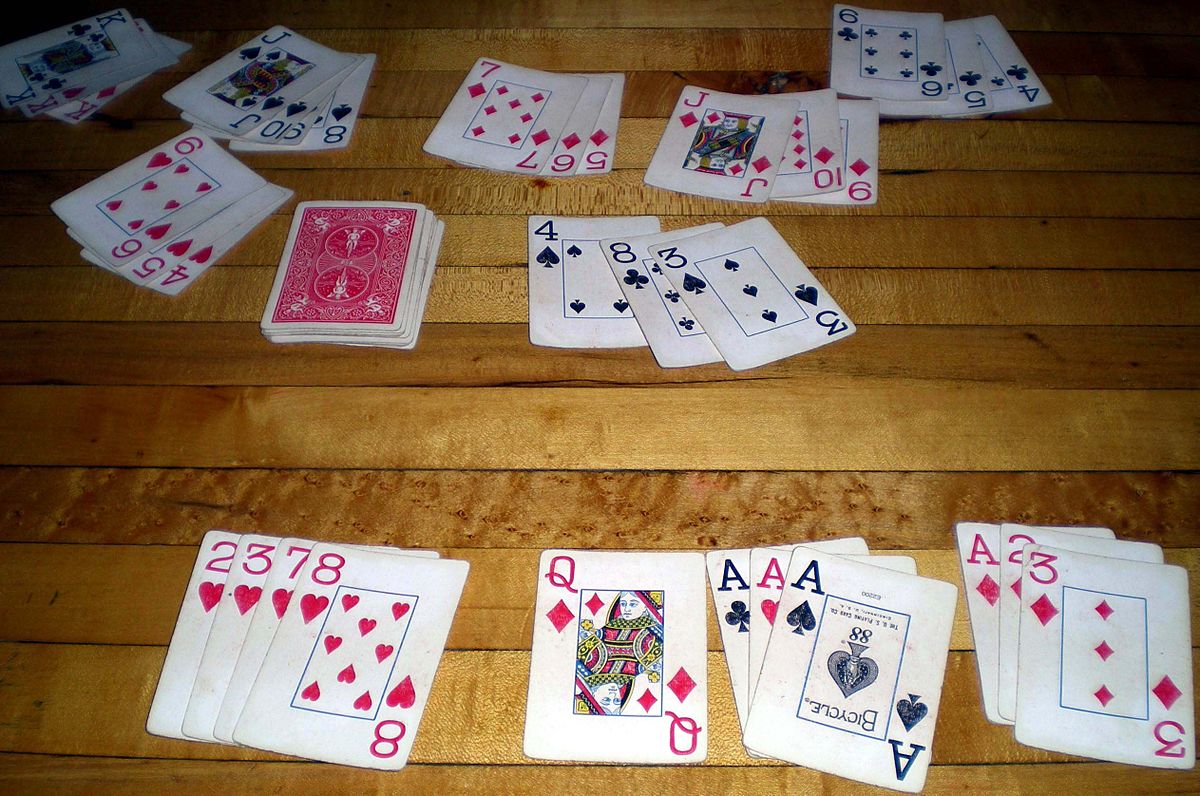How Many People Can Play Gin Rummy
How Many People Can Play Gin Rummy Average ratng: 4,0/5 1512 reviews
- How Many Players Can Play Gin Rummy
- How Many People Can Play Gin Rummy Game Board
- How Many People Can Play Gin Rummy Against
The Classic Card Game Goes Digital in This New Version. Gin rummy, or simply gin, is a two-player card game created in 1909 by Elwood T. Baker and his son C. It is a variant of rummy. It has enjoyed widespread popularity as both a social and a gambling game, especially during the mid twentieth century, and remains today one of the most. Gin Rummy is a card game used to play among two or more people's and with 52 cards so you can play and win gin rummy online for winning cash prizes.
Rules of rummy games. If you want to learn the rules to a specific rummy game, there's a good chance you'll find them here!
OBJECTIVE: The objective in gin rummy is to score points and reach an agreed number of points or more.
NUMBER OF PLAYERS: 2 players (variations can allow for more players)
NUMBER OF CARDS: 52 deck cards
RANK OF CARDS: K-Q-J-10-9-8-7-6-5-4-3-2-A (ace low)
TYPE OF GAME: Rummy
AUDIENCE: Adults
The Objective:
Players must set the number of points needed to win prior to the start of the game. The goal is to create runs and sets with your cards in order to score the most points and win the game.
Runs – A run is three or more cards in order of the same suit (Ace, two, three, four- of diamonds)
How Many Players Can Play Gin Rummy
Sets – Three or more of the same ranking cards (8,8,8)
How to deal:
Each player is dealt 10 cards face down. The remaining cards are placed in between the two players and serve as the deck. The top card of the deck should be flipped over to create the discard pile.
How to play:
The non-dealer has the option to start the game by picking up the flipped over card. If that player passes, then the dealer has the option to pick up the face-up card. If the dealer passes, then the non-dealer can begin the game by picking up the first card on the deck.
Once a card is picked up, the player must decided if they want to keep that card and discard another or discard the card that was drawn. Players are required to discard one card at the end of every turn.
Once opening play has been made, players are allowed to draw from the deck or pick up from the discard pile. Remember the goal is to create sets and runs to obtain the most points.
Scoring:
2 – 10 = Face Value
Going Out
An interesting facet of Gin Rummy is that players have more than one way of going out. Players can either go out via the traditional method known as Gin or by knocking.
Gin – Players must create a meld out of all cards in their hands. A player must pick up a card from the discard or stock pile before going Gin. You automatically receive 25points if you go Gin, plus you receive the total number of points of uncompleted melds from your opponents hand.
For example, if your opponents hand is as such (8,8,8 – 4,4,4 – 5,2,2,ace), then they have 10pts in uncompleted melds (5 +5+2+1 = 10 *ace=1) that you get to add to your score of 25pts, giving you a total of 35pts for winning that hand.

Knocking – A player can knock only if the un-meld cards in their hand equal 10 or less points. If a player meets the proper requirements, then they can execute a knock by literally knocking on the table (this is the fun part) then revealing their hand by laying their cards face up on the table.
How Many People Can Play Gin Rummy Game Board
Once the cards have been placed on the table, the opponent reveals their cards. They have the option of “hitting” your cards with the un-melded cards in their hand. For example if you lay down run of 2,3,4 of diamonds and your opponent has the 5 of diamond they can “ hit” your run and that card no longer counts as part of their un-melded cards.
How Many People Can Play Gin Rummy Against
Once the “hitting” has taken place it’s time to tally the score. Both players should total the number of un-melded cards in their hands. You must subtract the total of your un-melded cards from the total of your opponents un-melded cards and will be the number of point received from winning the hand! For example, if your un-mleded cards equal 5pts and your opponents un-melded cards equal 30pts, you will receive 25pts for that round.